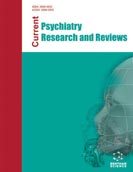
Abstract
Obesity is a multifactorial metabolic condition characterized by an abnormal or excessive accumulation of fat in the adipose tissue, capable of decreasing life expectancy. Chronically, the exacerbated inflammatory response interferes with the proper functioning of organs and tissues, becoming the cornerstone of various major metabolic imbalances in different systems, such as the central nervous system. Considering this, obesity’s meta-inflammation indirectly affects brain regions related to psychiatric illnesses and cognitive function. Also, it has been established that several neurobiological mechanisms related to appetite regulation and impulse control disorders could explain the onset of obesity. Thus, due to the high prevalence of mental illnesses linked to obese patients and the fact that a bidirectional relation between these two entities has been observed, many efforts have been made to establish an effective and secure pharmacological approach to obesity. In this context, several psychotropics and appetite- suppressant drugs, along with lifestyle changes, have been highlighted as promising therapeutic tools against obesity.
Keywords: Obesity, adipose tissue, neurobiological disorders, pharmacological approach, lifestyle, heavyweight.
[http://dx.doi.org/10.1007/978-3-319-48382-5_1] [PMID: 28585193]
[PMID: 27356115]
[http://dx.doi.org/10.3389/fendo.2021.735070] [PMID: 34603210]
[http://dx.doi.org/10.1089/lap.2018.0380] [PMID: 30010474]
[http://dx.doi.org/10.4158/EP14280.PS] [PMID: 25253227]
[PMID: 30605186]
[http://dx.doi.org/10.1136/adc.2005.073759] [PMID: 16428368]
[http://dx.doi.org/10.1038/nn1548] [PMID: 16158063]
[http://dx.doi.org/10.1038/emm.2016.4] [PMID: 26964832]
[http://dx.doi.org/10.1016/j.physbeh.2009.03.027] [PMID: 19351541]
[http://dx.doi.org/10.2174/156802607782341028] [PMID: 17979781]
[http://dx.doi.org/10.1126/science.1089459] [PMID: 15064421]
[http://dx.doi.org/10.1016/S2213-8587(20)30113-3] [PMID: 32445739]
[http://dx.doi.org/10.2174/1389203720666190125105401] [PMID: 30678628]
[http://dx.doi.org/10.1152/physrev.00034.2006] [PMID: 17928588]
[http://dx.doi.org/10.1016/j.lfs.2004.03.024] [PMID: 15302229]
[http://dx.doi.org/10.1038/ijo.2012.208]
[http://dx.doi.org/10.1016/j.tem.2020.02.006] [PMID: 32396843]
[http://dx.doi.org/10.12659/MSM.912957] [PMID: 30343311]
[http://dx.doi.org/10.1038/ncpendmet0318] [PMID: 17082808]
[http://dx.doi.org/10.1016/j.cmet.2017.05.013] [PMID: 28648981]
[http://dx.doi.org/10.1016/j.neuron.2017.06.014] [PMID: 28817798]
[http://dx.doi.org/10.1016/j.cmet.2018.02.008] [PMID: 29576534]
[http://dx.doi.org/10.1016/j.yfrne.2009.10.008] [PMID: 19896496]
[http://dx.doi.org/10.1016/S0092-8674(00)81865-6] [PMID: 9019399]
[http://dx.doi.org/10.1016/S0195-6663(82)80019-6] [PMID: 6760811]
[http://dx.doi.org/10.1016/j.cell.2005.08.035] [PMID: 16269339]
[http://dx.doi.org/10.1055/s-2007-984438] [PMID: 18058602]
[http://dx.doi.org/10.1210/en.2005-0972] [PMID: 16166213]
[http://dx.doi.org/10.1210/en.2007-0107] [PMID: 17615145]
[http://dx.doi.org/10.1152/advan.00012.2004] [PMID: 15545346]
[http://dx.doi.org/10.1002/oby.20659] [PMID: 24174404]
[http://dx.doi.org/10.3389/fnhum.2013.00499] [PMID: 23986683]
[http://dx.doi.org/10.1016/j.nicl.2015.03.016] [PMID: 26110109]
[http://dx.doi.org/10.1002/eat.22824] [PMID: 29328501]
[http://dx.doi.org/10.1373/clinchem.2017.273532] [PMID: 29158252]
[http://dx.doi.org/10.1016/j.neubiorev.2014.08.016] [PMID: 25205078]
[http://dx.doi.org/10.1002/oby.20728] [PMID: 24616451]
[http://dx.doi.org/10.1038/ijo.2009.67] [PMID: 19528974]
[http://dx.doi.org/10.7326/M15-2455] [PMID: 27367316]
[http://dx.doi.org/10.1016/j.chc.2019.05.007] [PMID: 31443880]
[http://dx.doi.org/10.1016/j.psc.2020.02.001] [PMID: 32439020]
[http://dx.doi.org/10.1002/erv.2162] [PMID: 22367789]
[http://dx.doi.org/10.1016/j.bcp.2007.06.043] [PMID: 17719013]
[http://dx.doi.org/10.1038/s41380-018-0017-5] [PMID: 29453413]
[http://dx.doi.org/10.1016/j.orcp.2016.07.003] [PMID: 27498907]
[http://dx.doi.org/10.1038/tp.2016.25] [PMID: 26978741]
[http://dx.doi.org/10.1038/nature07455] [PMID: 18923511]
[http://dx.doi.org/10.1007/s40211-019-0302-9] [PMID: 30778841]
[http://dx.doi.org/10.1016/j.neubiorev.2014.12.002] [PMID: 25496905]
[http://dx.doi.org/10.1177/2470547017703993] [PMID: 29503978]
[http://dx.doi.org/10.1038/s41398-021-01274-1] [PMID: 33654064]
[http://dx.doi.org/10.1093/gerona/gly127] [PMID: 29893815]
[http://dx.doi.org/10.1111/jnc.14662] [PMID: 30615192]
[http://dx.doi.org/10.1007/s11011-018-0369-1] [PMID: 30552557]
[http://dx.doi.org/10.1016/j.atherosclerosis.2015.11.015] [PMID: 26687466]
[http://dx.doi.org/10.3389/fnins.2018.00930] [PMID: 30618559]
[http://dx.doi.org/10.1007/s11011-017-0140-z] [PMID: 29101600]
[http://dx.doi.org/10.3389/fnins.2020.527258]
[http://dx.doi.org/10.3390/antiox9101018] [PMID: 33092099]
[http://dx.doi.org/10.1186/s12986-019-0352-9] [PMID: 31168311]
[http://dx.doi.org/10.1016/j.jprot.2016.03.022] [PMID: 27012543]
[http://dx.doi.org/10.3233/JAD-142052] [PMID: 25322927]
[http://dx.doi.org/10.1155/2015/803942] [PMID: 25973139]
[http://dx.doi.org/10.1038/s41598-017-14420-x] [PMID: 29070876]
[http://dx.doi.org/10.1371/journal.pone.0005045]
[http://dx.doi.org/10.1038/s41398-019-0470-1] [PMID: 31076569]
[http://dx.doi.org/10.1038/sj.mp.4000795] [PMID: 11244484]
[http://dx.doi.org/10.1002/(SICI)1096-9861(19990503)407:2<287::AID-CNE9>3.0.CO;2-R] [PMID: 10213096]
[http://dx.doi.org/10.2174/1570159X17666191010103044] [PMID: 31660837]
[http://dx.doi.org/10.3390/jcdd5010008] [PMID: 29385021]
[http://dx.doi.org/10.1016/j.redox.2019.101118] [PMID: 30769286]
[http://dx.doi.org/10.1523/JNEUROSCI.4200-13.2014] [PMID: 24523551]
[http://dx.doi.org/10.1186/s12974-018-1054-3] [PMID: 29343269]
[http://dx.doi.org/10.1523/JNEUROSCI.0789-18.2018] [PMID: 30201764]
[http://dx.doi.org/10.1016/j.psyneuen.2019.04.021] [PMID: 31078757]
[http://dx.doi.org/10.1172/JCI126078] [PMID: 31935195]
[http://dx.doi.org/10.1155/2014/658913] [PMID: 25110685]
[http://dx.doi.org/10.1172/JCI29126] [PMID: 16823476]
[http://dx.doi.org/10.3389/fnins.2018.00679] [PMID: 30333718]
[http://dx.doi.org/10.1186/s13024-016-0136-x] [PMID: 27884163]
[http://dx.doi.org/10.3390/nu11092195] [PMID: 31547312]
[http://dx.doi.org/10.1080/15622975.2018.1500033] [PMID: 30047831]
[http://dx.doi.org/10.1016/j.neulet.2006.08.043] [PMID: 16973279]
[http://dx.doi.org/10.1016/j.jpsychires.2012.04.028] [PMID: 22633396]
[PMID: 35008626]
[http://dx.doi.org/10.1007/s12035-014-8863-x] [PMID: 25169083]
[http://dx.doi.org/10.1016/j.neures.2018.10.004] [PMID: 30326250]
[http://dx.doi.org/10.1016/j.nicl.2018.11.016] [PMID: 30503215]
[http://dx.doi.org/10.1038/s41398-021-01349-z] [PMID: 33911072]
[http://dx.doi.org/10.18632/oncotarget.22960] [PMID: 29340106]
[http://dx.doi.org/10.1186/s12986-020-00508-1] [PMID: 33072166]
[http://dx.doi.org/10.1038/ijo.2012.48] [PMID: 22508336]
[http://dx.doi.org/10.1016/j.bbadis.2015.05.004]
[http://dx.doi.org/10.3390/ijms22073746] [PMID: 33916835]
[http://dx.doi.org/10.1038/ncomms2238] [PMID: 23212379]
[http://dx.doi.org/10.3390/nu11112579] [PMID: 31731503]
[http://dx.doi.org/10.3389/fgene.2019.00083]
[http://dx.doi.org/10.1016/j.tig.2013.03.002] [PMID: 23562612]
[http://dx.doi.org/10.1186/s13195-021-00830-7] [PMID: 33941254]
[http://dx.doi.org/10.2174/15748847113089990052] [PMID: 23342978]
[http://dx.doi.org/10.1097/MED.0000000000000140] [PMID: 25692921]
[http://dx.doi.org/10.1038/nrendo.2010.19] [PMID: 20234354]
[http://dx.doi.org/10.1210/er.2018-00283] [PMID: 30901029]
[http://dx.doi.org/10.1038/oby.2000.26] [PMID: 10832765]
[http://dx.doi.org/10.1055/s-0029-1212034] [PMID: 9792479]
[http://dx.doi.org/10.1001/jama.2013.281361] [PMID: 24231879]
[http://dx.doi.org/10.1002/oby.20584] [PMID: 24136928]
[http://dx.doi.org/10.1038/ijo.2009.124]
[http://dx.doi.org/10.1038/sj.ijo.0801889] [PMID: 11850760]
[http://dx.doi.org/10.1111/j.1463-1326.2010.01242.x] [PMID: 20920040]
[http://dx.doi.org/10.1177/2042018819897527] [PMID: 32030121]
[http://dx.doi.org/10.1159/000478098] [PMID: 28873376]
[http://dx.doi.org/10.1002/erv.2517] [PMID: 28467032]
[http://dx.doi.org/10.4088/JCP.v63n0909] [PMID: 12363121]
[http://dx.doi.org/10.1016/j.jad.2020.01.113] [PMID: 32063567]
[http://dx.doi.org/10.1196/annals.1367.017] [PMID: 17148744]
[http://dx.doi.org/10.1089/cap.2012.0095] [PMID: 24024532]
[http://dx.doi.org/10.2174/157015912799362788] [PMID: 22942877]
[PMID: 27680881]
[http://dx.doi.org/10.2174/1381612822666161006122934] [PMID: 27719651]
[http://dx.doi.org/10.1016/j.clinthera.2006.05.008] [PMID: 16861099]
[http://dx.doi.org/10.1016/j.clinthera.2004.09.017] [PMID: 15531005]
[http://dx.doi.org/10.1111/j.1600-0447.2006.00855.x] [PMID: 17244173]
[http://dx.doi.org/10.1093/eurheartj/ehm217] [PMID: 17595194]
[http://dx.doi.org/10.1002/14651858.CD007654.pub4] [PMID: 26934640]
[http://dx.doi.org/10.1016/S0140-6736(08)61525-1] [PMID: 18950853]
[http://dx.doi.org/10.1016/S0140-6736(09)60433-5] [PMID: 19249626]
[http://dx.doi.org/10.1016/j.pscychresns.2019.03.003] [PMID: 30903953]
[http://dx.doi.org/10.1001/jamapsychiatry.2017.1889] [PMID: 28700805]
[http://dx.doi.org/10.1001/jamapsychiatry.2014.2162] [PMID: 25587645]
[http://dx.doi.org/10.1007/s40263-014-0166-2] [PMID: 24788672]
[http://dx.doi.org/10.1001/jama.2016.7602] [PMID: 27299618]
[http://dx.doi.org/10.3810/pgm.2014.10.2817] [PMID: 25414931]
[http://dx.doi.org/10.1056/NEJMoa0909809] [PMID: 20647200]
[http://dx.doi.org/10.1210/jc.2011-1256] [PMID: 21795446]
[http://dx.doi.org/10.1080/17512433.2020.1698291] [PMID: 31770497]
[http://dx.doi.org/10.1111/obr.12015] [PMID: 23331711]
[http://dx.doi.org/10.1056/NEJMoa1808721] [PMID: 30145941]
[http://dx.doi.org/10.1016/S0140-6736(18)32328-6] [PMID: 30293771]
[http://dx.doi.org/10.1161/CIRCULATIONAHA.118.038341] [PMID: 30586726]
[http://dx.doi.org/10.2146/ajhp100638] [PMID: 22011982]
[http://dx.doi.org/10.1185/03007995.2013.794776] [PMID: 23574263]
[http://dx.doi.org/10.3945/ajcn.111.024927] [PMID: 22158731]
[http://dx.doi.org/10.1016/j.eplepsyres.2011.05.014] [PMID: 21684121]
[http://dx.doi.org/10.3233/JAD-2012-110629] [PMID: 22466064]
[http://dx.doi.org/10.1016/j.tem.2011.12.004] [PMID: 22245457]
[http://dx.doi.org/10.1007/s12325-017-0606-8] [PMID: 28884449]
[http://dx.doi.org/10.1345/aph.1R501] [PMID: 23482732]
[http://dx.doi.org/10.1038/oby.2011.330] [PMID: 22051941]
[http://dx.doi.org/10.1002/eat.23192] [PMID: 31721257]
[http://dx.doi.org/10.4093/dmj.2012.36.1.13] [PMID: 22363917]
[http://dx.doi.org/10.1159/000338163] [PMID: 22647302]
[http://dx.doi.org/10.7861/clinmedicine.19-3-205] [PMID: 31092512]
[http://dx.doi.org/10.1016/S0140-6736(10)60888-4] [PMID: 20673995]
[http://dx.doi.org/10.2337/dc13-0234] [PMID: 24144653]
[http://dx.doi.org/10.1038/oby.2010.147] [PMID: 20559296]
[http://dx.doi.org/10.1002/oby.20309] [PMID: 23408728]
[http://dx.doi.org/10.1007/s11906-019-0915-1] [PMID: 30747357]
[http://dx.doi.org/10.1016/S0011-393X(03)00126-7] [PMID: 24944395]
[http://dx.doi.org/10.1038/oby.2009.184] [PMID: 19521351]
[http://dx.doi.org/10.1016/j.metabol.2019.03.005] [PMID: 30902750]
[http://dx.doi.org/10.4088/JCP.v68n0809] [PMID: 17854247]
[http://dx.doi.org/10.4103/2230-8210.81938] [PMID: 21731866]
[http://dx.doi.org/10.4314/ahs.v19i3.35] [PMID: 32127832]
[http://dx.doi.org/10.1056/NEJMoa1916038] [PMID: 32233338]
[http://dx.doi.org/10.1016/S0140-6736(18)31773-2] [PMID: 30122305]
[http://dx.doi.org/10.1038/ijo.2017.98]
[http://dx.doi.org/10.3390/ijms20163905] [PMID: 31405212]
[http://dx.doi.org/10.1210/jc.2015-3906] [PMID: 26909799]
[http://dx.doi.org/10.1186/1687-9856-2009-141753] [PMID: 19946401]
[PMID: 18200802]
[http://dx.doi.org/10.1111/bcp.12874] [PMID: 26717446]
[http://dx.doi.org/10.1272/jnms.84.125] [PMID: 28724846]
[http://dx.doi.org/10.1111/j.1365-2710.2007.00817.x] [PMID: 17489873]
[http://dx.doi.org/10.1002/ardp.200700255] [PMID: 18574849]
[http://dx.doi.org/10.1016/j.pbb.2017.06.012] [PMID: 28666894]
[http://dx.doi.org/10.1016/j.cmet.2007.12.006] [PMID: 18177717]
[http://dx.doi.org/10.1038/nrendo.2010.56] [PMID: 20518102]
[http://dx.doi.org/10.1016/S0140-6736(07)61721-8] [PMID: 18022033]
[http://dx.doi.org/10.1056/NEJMoa044537] [PMID: 16291982]
[http://dx.doi.org/10.1136/openhrt-2017-000676] [PMID: 30018771]
[http://dx.doi.org/10.1016/j.neuropharm.2015.07.002] [PMID: 26164344]
[http://dx.doi.org/10.2147/DDDT.S144652] [PMID: 29238164]
[http://dx.doi.org/10.1007/s00213-018-5079-1] [PMID: 30382354]
[PMID: 19300566]
[http://dx.doi.org/10.1080/10401230590932407] [PMID: 16075662]
[http://dx.doi.org/10.1080/10673220802073915] [PMID: 18415880]
[http://dx.doi.org/10.3389/fncel.2018.00049] [PMID: 29599709]
[http://dx.doi.org/10.1016/j.physbeh.2017.12.005] [PMID: 29221808]
[http://dx.doi.org/10.1021/acs.jmedchem.8b00794] [PMID: 30265805]
[http://dx.doi.org/10.1111/dom.13020] [PMID: 28544245]
[http://dx.doi.org/10.1111/j.1476-5381.2009.00489.x] [PMID: 19922535]
[http://dx.doi.org/10.3389/fendo.2021.684656] [PMID: 34149622]
[http://dx.doi.org/10.1038/s41366-019-0386-0]
[http://dx.doi.org/10.1007/s10616-010-9288-7] [PMID: 20862608]
[http://dx.doi.org/10.1371/journal.pone.0092618] [PMID: 24675731]
[http://dx.doi.org/10.1007/s11655-019-3200-x] [PMID: 31144161]
[http://dx.doi.org/10.1016/j.jnim.2016.07.002]
[http://dx.doi.org/10.2174/1381612826666200701205132] [PMID: 32611293]
[http://dx.doi.org/10.1002/ptr.6547] [PMID: 31793087]
[http://dx.doi.org/10.1155/2011/509038] [PMID: 21197150]
[http://dx.doi.org/10.1016/j.physbeh.2005.09.013] [PMID: 16277999]
[http://dx.doi.org/10.1155/2017/5021902] [PMID: 29391949]
[http://dx.doi.org/10.1001/jama.2018.7777] [PMID: 30326501]
[http://dx.doi.org/10.1038/ncpgasthep0092] [PMID: 16265126]
[http://dx.doi.org/10.1038/nn0602-861] [PMID: 12021765]
[http://dx.doi.org/10.2174/1570161112999140206130426] [PMID: 23627981]
[http://dx.doi.org/10.1007/s13679-020-00422-w] [PMID: 33410104]
[http://dx.doi.org/10.5534/wjmh.200010] [PMID: 32202085]
[http://dx.doi.org/10.1053/j.gastro.2007.03.051] [PMID: 17498514]
[http://dx.doi.org/10.1161/CIRCULATIONAHA.111.039453] [PMID: 22392863]
[http://dx.doi.org/10.1016/j.mcna.2016.06.012] [PMID: 27745598]
[http://dx.doi.org/10.3390/nu8040229] [PMID: 27104562]
[http://dx.doi.org/10.1016/j.mcna.2017.08.009] [PMID: 29156179]
[http://dx.doi.org/10.1161/01.cir.0000437739.71477.ee] [PMID: 24222017]
[http://dx.doi.org/10.3390/ijms20030464] [PMID: 30678217]
[http://dx.doi.org/10.1038/cr.2017.126] [PMID: 29039412]
[http://dx.doi.org/10.1186/1475-2891-11-98] [PMID: 23171320]
[http://dx.doi.org/10.1016/j.clnu.2017.11.018] [PMID: 29258678]
[http://dx.doi.org/10.1080/07315724.2004.10719381] [PMID: 15466943]
[http://dx.doi.org/10.7570/jomes20028] [PMID: 32699189]
[http://dx.doi.org/10.1016/j.yclnex.2019.09.002]
[http://dx.doi.org/10.1080/07315724.2013.767630] [PMID: 24015695]
[http://dx.doi.org/10.1093/jn/nxz117] [PMID: 31174214]
[http://dx.doi.org/10.1093/ajcn/78.5.920] [PMID: 14594777]
[http://dx.doi.org/10.1093/ajcn/80.5.1237] [PMID: 15531671]
[http://dx.doi.org/10.1111/j.1467-789X.2010.00786.x] [PMID: 20633234]
[http://dx.doi.org/10.1186/1758-5996-7-S1-A139]
[http://dx.doi.org/10.1038/oby.2007.616] [PMID: 17426332]
[http://dx.doi.org/10.3390/ijms17101689] [PMID: 27735847]
[http://dx.doi.org/10.1155/2015/581469] [PMID: 26339623]
[http://dx.doi.org/10.15171/mejdd.2017.66] [PMID: 28894517]
[http://dx.doi.org/10.1186/s12906-016-1540-z] [PMID: 28086768]
[http://dx.doi.org/10.1017/S0007114518001861] [PMID: 30058513]
[http://dx.doi.org/10.3390/nu12103039] [PMID: 33023000]
[http://dx.doi.org/10.1373/clinchem.2017.272443] [PMID: 29158251]
[http://dx.doi.org/10.1016/j.amjmed.2011.02.037] [PMID: 21787904]
[http://dx.doi.org/10.1016/j.pcad.2014.10.002] [PMID: 25459976]
[http://dx.doi.org/10.2105/AJPH.2007.124495] [PMID: 18556608]
[http://dx.doi.org/10.1002/oby.20145] [PMID: 23592678]
[http://dx.doi.org/10.1007/s40279-017-0807-y] [PMID: 29127602]
[http://dx.doi.org/10.1111/obr.12532] [PMID: 28401638]
[http://dx.doi.org/10.1123/ijsnem.2017-0221] [PMID: 28871849]
[http://dx.doi.org/10.3390/genes10090720] [PMID: 31533339]
[http://dx.doi.org/10.3390/ijerph17134655] [PMID: 32605252]
[http://dx.doi.org/10.3389/fpsyt.2020.00563] [PMID: 32670105]
[http://dx.doi.org/10.1002/wps.20331] [PMID: 27265709]
[http://dx.doi.org/10.4314/ahs.v20i3.39] [PMID: 33402982]
[http://dx.doi.org/10.1111/j.1651-2227.2009.01365.x]
[http://dx.doi.org/10.1139/apnm-2012-0104] [PMID: 23368830]
[PMID: 24149873]
[http://dx.doi.org/10.1016/j.appet.2015.05.006] [PMID: 25963104]
[http://dx.doi.org/10.3390/nu10091140] [PMID: 30131457]
[http://dx.doi.org/10.1016/j.physbeh.2014.12.050] [PMID: 25562575]











